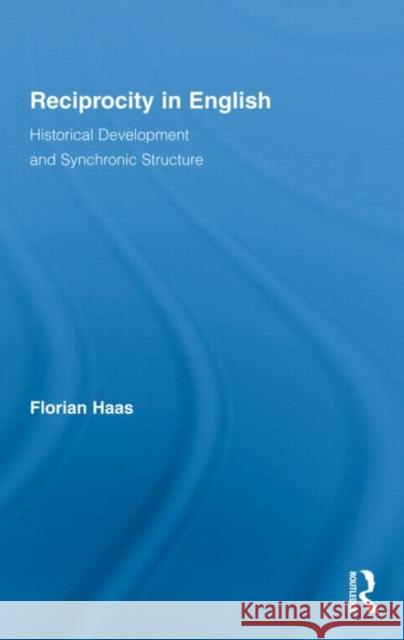Reciprocity in English: Historical Development and Synchronic Structure » książka
Reciprocity in English: Historical Development and Synchronic Structure
ISBN-13: 9780415804356 / Angielski / Twarda / 2009 / 178 str.
Reciprocity in English: Historical Development and Synchronic Structure
ISBN-13: 9780415804356 / Angielski / Twarda / 2009 / 178 str.
(netto: 441,32 VAT: 5%)
Najniższa cena z 30 dni: 331,46 zł
ok. 16-18 dni roboczych.
Darmowa dostawa!
Although the grammatical expression of reciprocal (or 'mutual') situations in the languages of the world has received a surprising amount of attention in recent years, so far no comprehensive study specifically dealing with the historical development and synchronic structure of English reciprocal constructions has been published. This book takes into consideration insights from the three major research projects on reciprocity in the languages of the world as well as the rich literature on more specific aspects of reciprocity. Assuming a usage-based model of grammar, the development of the reciprocal strategies used in present-day English is described, with special attention paid to the periods following Middle English, where today's system began to take shape. The means of expressing reciprocity in today's English (e.g. the expressions each other and one another) are then analyzed as a system of competing constructions, the make-up and distribution of which can be related both to their history and subtle distinctions in meaning and use associated with the different constructions. Quantitative data from corpora of natural language provides evidence for the analyses put forward. Wherever possible, claims on the expression of reciprocity in present-day English are checked against what is known about the grammar of reciprocity in other languages.
Although the grammatical expression of reciprocal situations in the languages of the world has received a surprising amount of attention in recent years, so far no comprehensive study has been published that specifically deals with the historical development and synchronic structure of reciprocal constructions in English. The present book is meant to fill this gap. Assuming a usage-based model of grammar, Haas describes the reciprocal strategies that are used in present-day English and how they have come to be the way they are. It pays special attention to the periods following Middle English, where today’s system began to take shape. Means of expressing reciprocity include the specialized reciprocal expressions each other and one another as well as their structurally more transparent counterparts (My two colleagues each mistrust the other) and different ways of using verbs that have reciprocity as part of their meaning (e.g. meet and resemble). These different strategies are analysed as a system of competing constructions whose make-up and distribution can be related both to their history and to subtle distinctions in meaning. Quantitative data from corpora of natural language provides evidence for the analyses put forward. Furthermore, the book situates the expression of reciprocity in English within the larger picture of what is known about the grammar of reciprocity from a cross-linguistic point of view. Combining insights from different strands of research with original corpus-based work, this study will be of interest to descriptively and theoretically oriented linguists alike.











